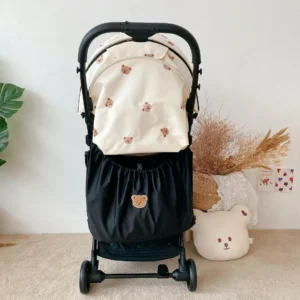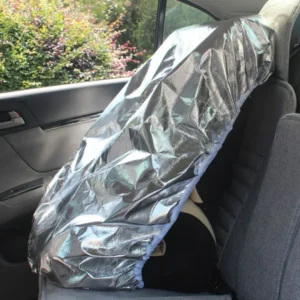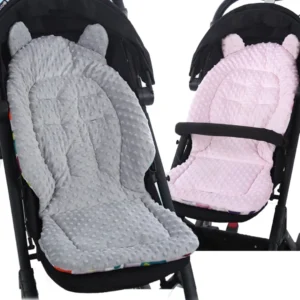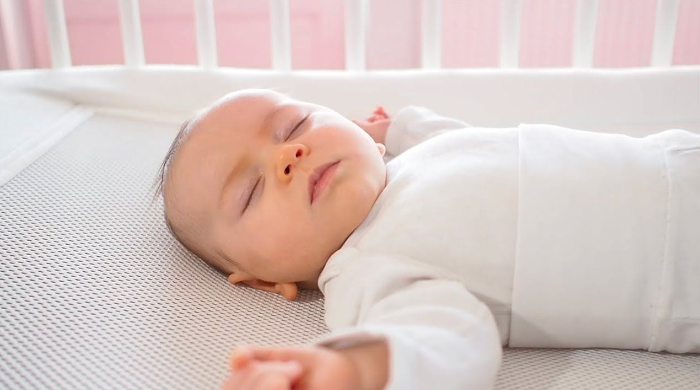As new parents, we often find ourselves marveling at the angelic sight of our sleeping babies, peacefully nestled in their bassinets. However, as the months roll by, a growing question lingers in our minds: How long can our little ones stay in their cozy bassinets?
Transitioning from a bassinet to a crib is an important milestone that requires careful consideration. Factors such as weight limit, developmental stages, and the comfort of the baby come into play.
But fear not, for with the right knowledge of safety guidelines and the establishment of a bedtime routine, this transition can be made smoothly and with the support of loving parents. So, let us explore the fascinating world of moving our precious bundles from bassinet to crib, and unlock the secrets of prolonged peaceful slumber.
How long can a baby sleep in the bassinet?
A baby can sleep in a bassinet for as long as they meet the weight limit and until they show signs of being cramped or waking up frequently. Bassinets typically have weight limits that can range from as low as 10 pounds.
It is recommended to consider moving the baby to a crib when they reach around 15 pounds. The transition from a bassinet to a crib can be done gradually and in stages.
Following safety guidelines from the Consumer Product Safety Commission is essential. Establishing a bedtime routine, such as dimming lights and using white noise, can help signal sleep in the crib.
Moving the crib into the parents’ room for a few nights before the baby’s own room, and gradually moving farther away from the crib each night, can ease the transition. It is important to note that no stuffed animals, pillows, or blankets should be placed in the crib until the baby is at least 12 months old.
While transitioning to their own crib takes time, it is beneficial for the whole family.
Key Points:
- Babies can sleep in a bassinet until they reach the weight limit or show signs of being cramped or waking up frequently.
- Bassinets typically have weight limits that can be as low as 10 pounds.
- It is recommended to consider moving the baby to a crib when they reach around 15 pounds.
- Transitioning from a bassinet to a crib can be done gradually and in stages.
- Following safety guidelines from the Consumer Product Safety Commission is essential.
- Establishing a bedtime routine and using cues like dimming lights and white noise can help signal sleep in the crib.
Sources
https://www.whattoexpect.com/sleep-strategies/bassinet-to-crib.aspx
https://www.babylist.com/hello-baby/how-long-can-a-baby-sleep-in-a-bassinet
https://www.babycious.com/how-long-can-baby-sleep-in-a-bassinet/
https://www.sleepadvisor.org/how-long-can-a-baby-sleep-in-a-bassinet/
💡 Pro Tips:
1. Check the weight limit of your bassinet to determine how long your baby can sleep in it. Some bassinets have weight limits as low as 10 pounds.
2. Consider moving your baby to a crib when they reach 15 pounds. This will provide them with more space and ensure their safety.
3. If your baby seems cramped in the bassinet or is waking up frequently, it may be a sign that it’s time to transition to a crib.
4. Follow the safety guidelines provided by the Consumer Product Safety Commission when transitioning your baby from a bassinet to a crib.
5. Transitioning from a bassinet to a crib can be done in stages. Start by establishing a bedtime routine to help signal sleep in the crib, then gradually move the crib into the baby’s room and spend a few nights sleeping in the same room to ease the transition.
No Specific Age To Stop Sleeping In Bassinet
When it comes to determining how long a baby can sleep in a bassinet, there is no specific age that should be followed. Instead, it is essential to consider the weight limit of the bassinet and the child’s development.
Bassinets typically have weight limits ranging from 10 to 20 pounds. This means that once a baby reaches the weight limit of the bassinet, it may be time to consider transitioning them to a crib.
However, it is essential to note that weight is not the only factor to consider, as a baby’s development and comfort level are also important.
Weight Limits And Child Development Considerations
The weight limits of bassinets can vary significantly, with some having weight limits as low as 10 pounds. It is crucial for parents to be aware of the weight limit of their specific bassinet model and follow it accordingly.
Once a baby reaches this weight limit, it may be an indication that they have outgrown the bassinet and may need a more spacious sleeping environment.
However, weight alone should not be the sole determining factor. It is also essential to consider the baby’s development and growth.
If the baby seems cramped or is frequently waking up in the bassinet, it may be a sign that they are no longer comfortable in it and may benefit from transitioning to a crib. Every baby is different, so it is important for parents to observe their child’s behavior and make a judgment based on their individual needs.
When To Consider Moving To A Crib
While there is no specific age to stop using a bassinet, there are signs that indicate it may be time to consider moving the baby to a crib. As mentioned earlier, if the baby reaches the weight limit of the bassinet or seems cramped and uncomfortable, it may be time for a transition.
Additionally, if the baby starts showing signs of increased mobility, such as rolling over or trying to sit up, a crib with more space and safety features can provide a better sleeping environment.
Parents should also consider their own peace of mind when deciding to transition the baby to a crib. If they find themselves worrying excessively about the baby’s safety in the bassinet or constantly checking on them throughout the night, it may be a sign that a crib is a more suitable option.
Ultimately, the decision to move to a crib should be based on a combination of factors, including the child’s comfort, development, and parental peace of mind.
Safety Guidelines From Consumer Product Safety Commission
When transitioning a baby from a bassinet to a crib, it is crucial to follow safety guidelines set by the Consumer Product Safety Commission (CPSC). These guidelines ensure the baby’s safety and reduce the risk of accidents or injuries.
Here are some key safety guidelines to keep in mind:
Use a crib that meets the current safety standards set by the CPSC. – Make sure the crib mattress fits snugly against all sides of the crib to prevent any gaps where the baby’s head or limbs could become trapped.
Remove any hanging mobiles or toys that could pose a strangulation hazard. – Keep the crib free of pillows, blankets, and stuffed animals until the baby is at least 12 months old to reduce the risk of suffocation.
Ensure the crib is positioned away from windows, cords, or any potential hazards.
By following these safety guidelines, parents can ensure their baby sleeps in a secure and comfortable environment as they transition from a bassinet to a crib.
Transitioning From Bassinet To Crib Gradually
Transitioning a baby from a bassinet to a crib can be done gradually to help ease both the baby and parents into the new sleeping arrangement. Here are some tips for a smooth transition:
Establish a consistent bedtime routine to signal to the baby that it’s time to sleep in the crib. This routine can include activities like a warm bath, gentle massage, or reading a bedtime story.
Initially, move the crib into the parents’ room for a few nights to help the baby feel secure and adjust to the new sleeping environment. – Consider sleeping in the baby’s room with them for a few nights to provide extra comfort and reassurance during the transition.
Gradually move farther away from the crib each night until the baby becomes accustomed to sleeping in their own space. – Create a soothing sleep environment by dimming the lights and using white noise or soft music to help the baby relax and fall asleep.
It is important to remember that transitioning a baby from a bassinet to a crib takes time and patience. Parents should be prepared for some disruptions in their baby’s sleep routine during the transition period.
However, with consistency and a nurturing approach, the entire family can benefit from the baby sleeping in their own crib.





